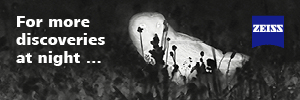Alternative names: Guttated Bowerbird; Pale-spotted Bowerbird; Yellow-spotted Bowerbird; Large-spotted Bowerbird
- Chlamydera guttata
Ptilonorhynchus guttatus
Identification
28cm (11 in)
- Rufous-buff head with black feather margins, crown with glossy silvery-white sheen
- Pale to bright pink erectile filamentous nuchal crest
- Blackish-brown to blackish upperparts and upperwings with bold terminal or subterminal clay-coloured rounded feather spotting
- Blackish-brown to blackish chin, throat, ear-coverts and upper breast with clay-coloured spotting
- Dirty buff rest of underparts
- Dark brown eye
- Blackish bill
- Olive-brown legs
Female like male but without pink crest (older females may have a small one). Juveniles undescribed, immatures without crest.
Similar species
Much darker than similar Spotted Bowerbird.
Distribution
Central Australia and the Pilbara region of Western Australia.
Generally uncommon.
Taxonomy
May form a superspecies with Spotted Bowerbird and has been considered conspecific in the past.
Subspecies
Two subspecies recognized:
- C. g. carteri in North West Cape, Western Australia
- C. g. guttata in Western Australia, southern Northern Territory and north-west South Australia
Habitat
Riverine woodland, scrub thickets, often in rocky ranges and gorges. Visits gardens around human habitation. Occurs from sea-level up to 500m.
Behaviour
Diet
Feeds mainly on fruits (particulary rock figs). Takes also flowers, seeds, buds, nectar and arthropods.
Breeding
Breeding season from July to March, display peaking from August to December. A polygynous species. The male builds and attends a bower to attract females. They build a nest alone and also breed alone.
The avenue-type bower is quite large. It's decoration varies geographically, it includes bone fragments, snail shells, green fruits, pebbles and many other items including human-made ones. Theft or even desctruction of bower by other male occurs. When the female arrives the male performs a courtship display.
Following mating, females construct nests of a shallow bowl of dead twigs, placed in a low bush or tree. 1- 2 eggs are laid.
Movements
A resident species. Some local wandering may occur.
References
- Clements, J. F., T. S. Schulenberg, M. J. Iliff, S. M. Billerman, T. A. Fredericks, B. L. Sullivan, and C. L. Wood. 2019. The eBird/Clements Checklist of Birds of the World: v2019. Downloaded from http://www.birds.cornell.edu/clementschecklist/download/
- Del Hoyo, J, A Elliott, and D Christie, eds. 2009. Handbook of the Birds of the World. Volume 14: Bush-shrikes to Old World Sparrows. Barcelona: Lynx Edicions. ISBN 978-8496553507
Recommended Citation
- BirdForum Opus contributors. (2024) Western Bowerbird. In: BirdForum, the forum for wild birds and birding. Retrieved 4 May 2024 from https://www.birdforum.net/opus/Western_Bowerbird






